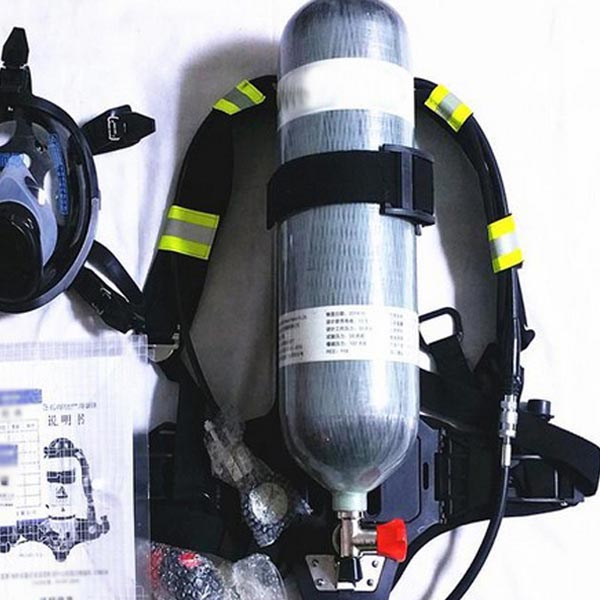The Important Knowledge of The SCBA Usage
A self-contained breathing apparatus, or SCBA, sometimes referred to as a compressed air breathing apparatus (CABA), or simply breathing apparatus (BA), is a device worn by rescue workers, firefighters, and others to provide breathable air in an "Immediately Dangerous to Life or Health" atmosphere.Sometimes,they are called industrial breathing sets.
An SCBA typically has three main components: a high-pressure tank (e.g., 2,216 to 4,500 psi (15,280 to 31,030 kPa), about 150 to 300 atmospheres), a pressure regulator, and an inhalation connection (mouthpiece, mouth mask or face mask), connected together and mounted to a carrying frame.
There are two major application areas for SCBA: fire fighting; and industrial use.A third use now coming into practice is medical;for example,the American National Institutes of Health prescribe use of SCBAs for medical staff during treatment of ebola.
For fire fighting, the design emphasis is on heat and flame resistance above cost. SCBA designed for fire fighting tend to be expensive because of the exotic materials used to provide the flame resistance and to a lesser extent, to reduce the weight penalty on the fire fighter. In addition, modern firefighting SCBAs incorporate a PASS device (Personal Alert Safety System) or an ADSU (Automatic Distress Signal Unit) into their design. These units emit distinctive high pitched alarm tones to help locate firefighters in distress by automatically activating if movement is not sensed for a certain length of time (typically between 15 and 30 seconds), also allowing for manual activation should the need arise. In firefighting use, the layout of this breathing set should not interfere with ability to carry a rescued person over the firefighter's shoulders.
The other major application is for industrial users of various types. Historically, mining was an important area, and in Europe this is still reflected by limitations on use in the construction of SCBAs of metals that can cause sparks. Other important users are petrochemical, chemical, and nuclear industries. The design emphasis for industrial users depends on the precise application and extends from the bottom end which is cost critical, to the most severe environments where the SCBA is one part of an integrated protective environment which includes gas tight suits for whole body protection and ease of decontamination. Industrial users will often be supplied with air via an air line, and only carry compressed air for escape or decontamination purposes.
The pressure gauge's indicated gas pressure changes with ambient temperature. As temperature decreases, the pressure inside the cylinder decreases. The relationship between the temperature and the pressure of a gas is estimated by using the formula PV = nRT. (See Universal gas constant.) What is particularly important to understand from the formula is that the temperature is in kelvins, not degrees Fahrenheit. Consider the freezing point of water at 32 degrees Fahrenheit (0 degrees Celsius, 273.15 kelvin) and compare it to 96 °F (35.6 °C or 308.71K; normal human body temperature is 37 °C). While 96 is arithmetically three times 32, the difference in temperature from a scientific point of view is not threefold. Instead of comparing 32 °F to 96 °F, temperatures of 273.15K and 308.71K should be compared.The actual scientifically valid change in temperature from 32 to 96 °F (0 to 36 °C) is by a factor of 1.13 (308.71K/273.15K), not 3. If an air cylinder is pressurized to 4,500 psi at 96 °F and later the temperature drops to 32 °F, the pressure gauge will indicate 4,000 psi (4,500/1.13). Stated differently, a drop in temperature of 10 degrees Fahrenheit (5.5 degrees Celsius) causes a pressure decrease of about 82 psi. Failure to accurately account for the effect of temperature on pressure readings can result in underfilled air bottles, which in turn could lead to a firefighter running out of air prematurely
